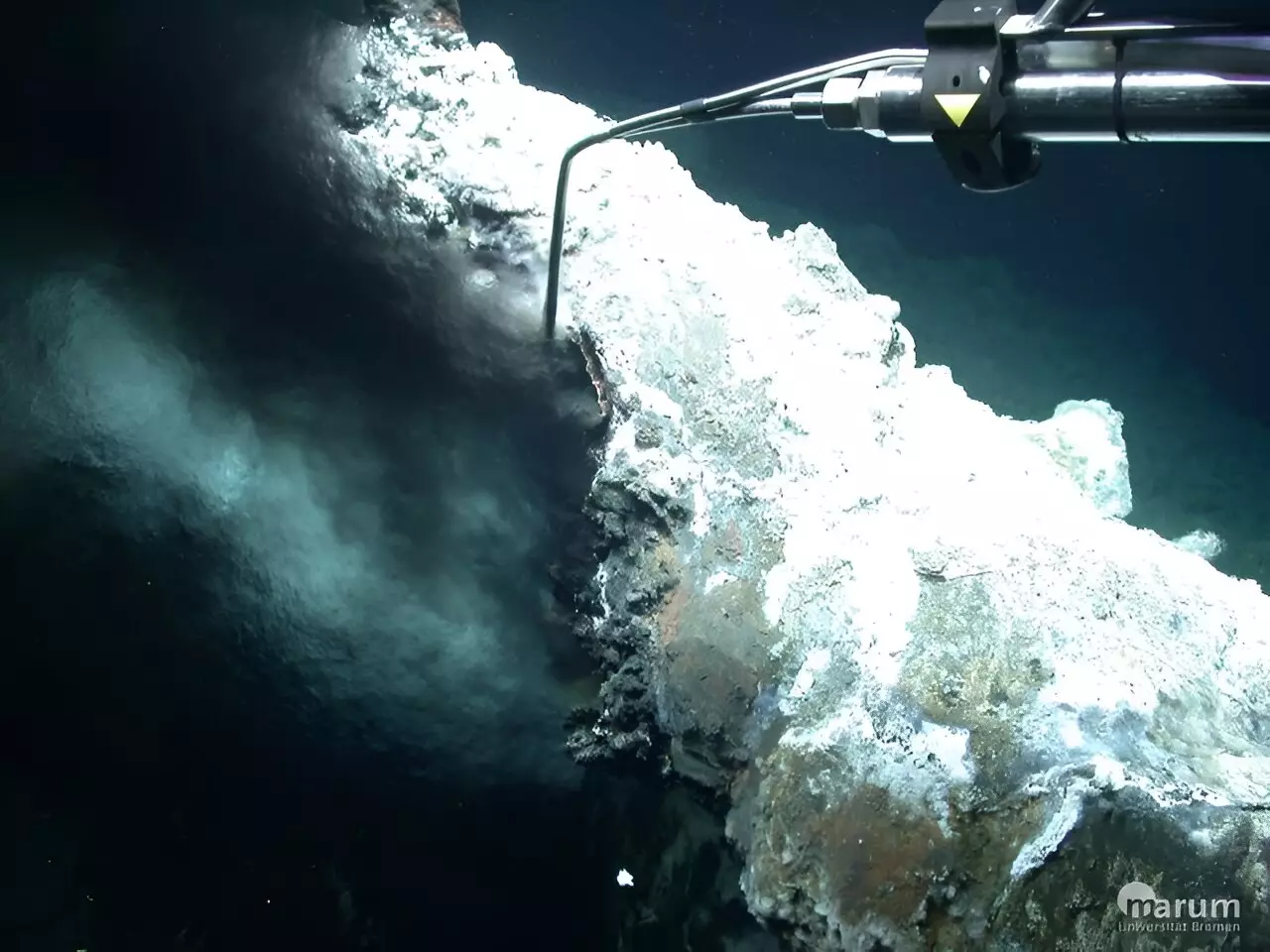The exploration of hydrothermal vents, located at the junctions of drifting tectonic plates, has always been an exciting area of research for scientists. These vents, known for their unique ecosystems and mineral-rich chimneys called black smokers, provide valuable insights into the Earth’s deep-sea processes. However, despite significant advancements in this field, there are still many unexplored hydrothermal fields waiting to be discovered. One such recent discovery is the Jǫtul Field, located on the Knipovich Ridge off the coast of Svalbard.
In 2022, during an expedition of the MARIA S. MERIAN, a team of international researchers led by Prof. Dr. Gerhard Bohrmann uncovered the first hydrothermal field on the 500-kilometer-long Knipovich Ridge. This discovery, named after Jǫtul, a giant in Nordic mythology, marks a significant milestone in the study of oceanic hydrothermal systems. The Jǫtul Field is situated on a slow-spreading ridge at water depths greater than 3,000 meters, making it a unique location for scientific investigation.
The Jǫtul Field not only provides valuable insights into the geological processes occurring on slow-spreading ridges but also holds climate significance. The high concentrations of methane detected in the fluid samples from the field indicate a strong interaction of magma with sediments. This interaction leads to the conversion of methane into carbon dioxide, ultimately contributing to ocean acidification and climate change. Further studies are needed to understand the impact of methane emissions from the Jǫtul Field on the environment.
One of the intriguing aspects of hydrothermal vents is the unique ecosystem they support. In the darkness of the deep ocean, where photosynthesis is not possible, chemosynthesis plays a crucial role in sustaining life. Organisms living in symbiosis with bacteria rely on the minerals and nutrients carried by the hydrothermal fluids for their survival. The Jǫtul Field presents an opportunity to study these chemosynthetic organisms in a previously unexplored environment.
To further unravel the mysteries of the Jǫtul Field and expand upon the current knowledge of hydrothermal vent ecosystems in the Arctic, a new expedition led by Gerhard Bohrmann is planned. This upcoming expedition aims to explore and sample unknown areas of the field, providing valuable data for comparative studies with other hydrothermal fields in the region. The Jǫtul Field is poised to become a key research site for future investigations in the field of marine geosciences and climate studies.
The discovery of the Jǫtul Field represents a significant advancement in our understanding of hydrothermal vent systems and their impact on the environment. By studying the unique geological features, chemical compositions, and biological communities of the field, scientists hope to gain valuable insights into the complex interactions shaping our oceanic ecosystems. As research in this area continues to evolve, the Jǫtul Field stands out as a beacon of discovery and exploration in the world of marine science.


Leave a Reply